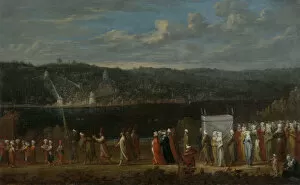Turkish Woman Collection
The Turkish woman, a symbol of grace and beauty, has captivated the world with her unique style and cultural heritage
All Professionally Made to Order for Quick Shipping
The Turkish woman, a symbol of grace and beauty, has captivated the world with her unique style and cultural heritage. From the bustling streets of Constantinople (Istanbul), in the heart of the Ottoman Empire, to the provincial towns adorned with traditional dress, these women have left an indelible mark on history. In portraits like "Portrait of a Young Woman (Turkish Slave)" by Parmigianino or "Oriental Woman" by an anonymous artist from 1681-1682, we catch a glimpse of their allure and mystery. These paintings showcase their elegance and poise as they don exquisite attire that reflects their rich cultural background. From weddings to leisurely activities, artists like Jean-Baptiste Vanmour and Fausto Zonaro have immortalized moments such as "Turkish Wedding" in 1789 or "Amusement at Goksu. " These artworks depict vibrant celebrations filled with music, dance, and joyous festivities where Turkish women shine brightly. However, not all aspects of their lives were visible to outsiders. The enigmatic world behind closed doors is revealed through works like Filippo Baratti's painting depicting a Turkish woman in a Harem. This intimate portrayal offers us a glimpse into their secluded existence within lavish surroundings. Beyond aesthetics and social settings depicted in art lies another facet: craftsmanship. The skillful hands of Turkish women are showcased through embroidery frames capturing intricate designs that reflect both tradition and innovation. Throughout history, whether it be at Allah's behest putting on a clean shirt once a year or embracing provincial dress styles unique to each region within Turkey itself; these women have embodied strength, resilience, creativity while preserving their cultural identity. The legacy of the Turkish woman continues to inspire admiration for her timeless elegance and contribution to artistry worldwide.












